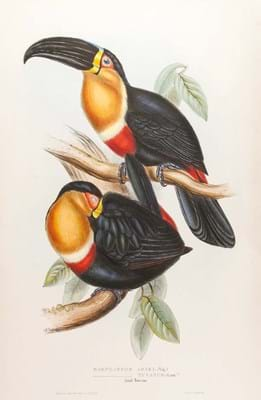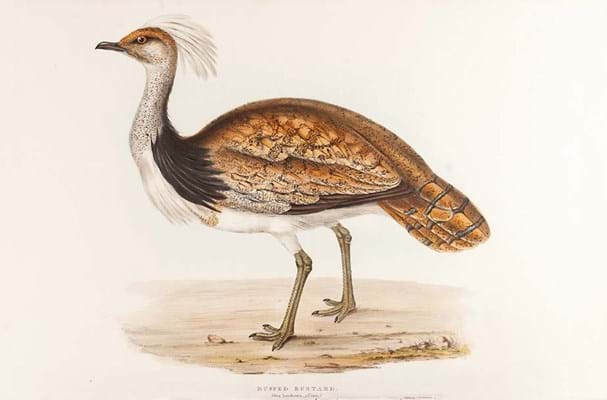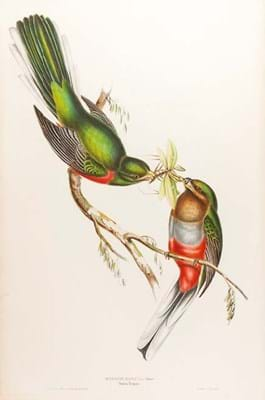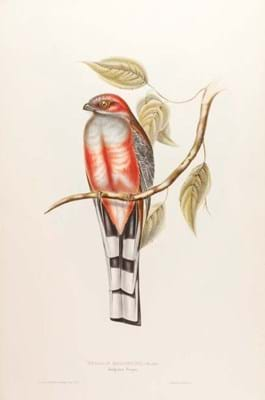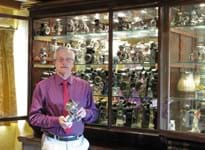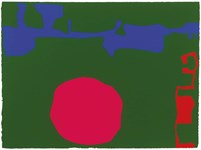However, in an exhibition of 50 images running at the Mayfair gallery Sotheran’s until August 1, Elizabeth takes centre stage as The Bird Woman, the more talented artist of the pair who took his rough sketches and transformed them into prized works of art.
John’s approach to illustrations for his books was always collaborative. He created pencil or watercolour compositions around his subjects with notes for artists – such as Edward Lear (1812-88), Joseph Wolf and Henry Richter – to make final, full-colour works.
Life and work partners
Elizabeth and John were introduced through her brother, the taxidermist Charles Coxen, and married in 1829. She first started drawing specimens to supplement his work, illustrating letters to colleagues, for example, but soon became more closely involved with his publications.
John encouraged her to learn lithography from Lear and she ultimately completed more than 650 plates, which appeared in publications such as The Birds of Europe (1837) and A Monograph of the Ramphastidae, or Family of Toucans (1834).
For those familiar with the prints, her specific hand can be discerned, says Sotheran’s Richard Shepherd, though the clearest indication of her involvement is the inclusion of her initial with that of her husband on many of the works: J&E Gould.
The gallery, founded in 1761, purchased Gould’s estate on his death in 1881, and many of the works in this show are from that historic collection. Though Gould illustrations do appear on the open market (at Sotheby’s London last year and at Forum Auctions in 2017, for example), Shepherd says the largest collection – a “huge resource” – remains in the dealership’s hands.
“We hadn’t done a Gould exhibition in quite a while,” he adds, and with the interest in recovering historic women artists on the rise in 2019, this seemed an ideal direction for the show to take. Elizabeth’s role in the illustrations “wasn’t all that well known at the time”, says Shepherd. “This sort of work wasn’t seen as respectable for a woman.”
Almost nothing is known about how she approached her works, and there is no evidence of how she felt about the predominance of her husband’s name, not hers, in each publication. The most extensive record of her life comes from letters she wrote to her mother in the late 1830s while accompanying John during his two-year stint in Australia, working towards his magnum opus on antipodean fauna.
She died in 1841 shortly after completing 84 prints for The Birds of Australia (1840-48) and giving birth to her eighth child.
Lear later wrote that John “owed everything to his excellent wife, and to myself, without whose help in drawing he had done nothing”. Nothing is known about John’s feeling towards his wife’s involvement either, though following her death he named the Gouldian Finch (or the Lady Gouldian Finch) in her honour.
During the 20th century her contribution to his output has received increasing recognition, with several biographies published since the 1940s.
The show at Sotheran’s is accompanied by a limited-edition book, Elizabeth Gould: The Bird Woman, comprising 50 plates and available for £20.
‘Unsung’ female figures
Elsewhere in the show, books and writings by other ‘unsung’ female figures are on offer. Chemist Rosalind Franklin (1920-58) is among those represented. She worked on the discovery of the double helix theory of DNA but died before her team was awarded the Nobel Prize.
Also included is Leonora Lang (1851-1933), who collaborated on the celebrated Fairy Books of her husband Andrew Lang, translating and transcribing many of the stories included from their original languages.


